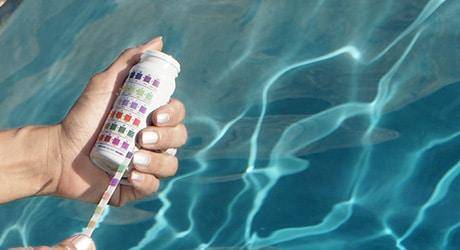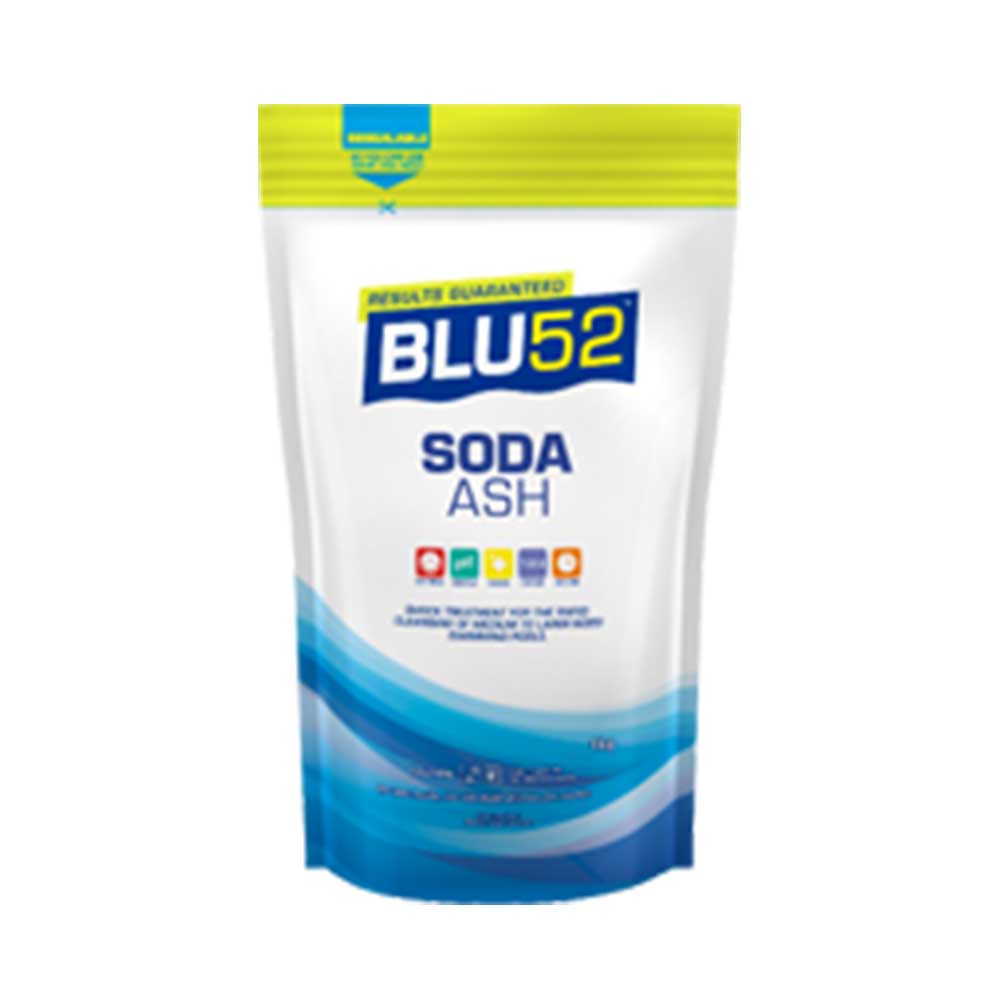Table of Contents
How To Raise pH In Your Swimming Pool Using Quick Fixes- Learn Everything
Wondering how to raise pH in a pool? We love swimming and swimming pools are extremely fun to cool off, but when the pH goes down or raises high, we would not get the cooling effect and calmness we thought before jumping in. Rather, all we would be receiving is irritation and sickness.
This piece of information will guide you through how to raise pH in a pool and maintain it further. If you have recently used a tool kit to measure the pH level of your pool, you might be in a dilemma and wondering how to raise pH in a pool, do not worry, let’s start from the beginning.
What Is pH?

When we talk about pH in water, we are indicating whether the water is acidic, neutral, or alkaline. Scientifically you can elaborate pH as Potential Hydrogen which means a substance’s power or ability to attract hydrogen ions. We do not have to go into the scientific explanation, so don’t stress too much.
All you need to know regarding your pool’s pH is that your pool should have an optimum pH or neutral pH, it could be slightly towards the alkaline side, but make sure you are not exceeding the range.
Experts suggest that your pool’s optimum pH should be 7.2 to 7.8. Wondering which is the perfect one? Yes, it’s 7.4. When the pH drops highly and becomes acidic, you will hear a lot about irritation and burning sensations, while a rise in pH will cause your pool’s water to be alkaline which will cause murky and scaling water. You would not want to have either of these.
Why Balance Is Important In Your Pool?

Balancing an optimum pH is very important to maintain sanitary conditions for your swimming. There are several new chemicals that are present in the market nowadays to balance pH, but the most common is chlorine, which has been in use for decades and has been an answer to common questions about how to raise pH in a pool or lower it.
Chlorine in water functions in different ways, these are:
- It kills the bacteria and algae in the water to disinfect from waterborne diseases. When the bacteria is not treated for too long, it can cause all the people that came to your pool to suffer from skin infections, ear infections, or diarrhea.
- Chlorine is an amazing oxidizing agent and helps in neutralizing debris and dirt particles that accumulated in your pool. This dirt can either get inside the pool through the environment or swimmers that often use your pool.
When the pH is not balanced and you are still wondering about how to raise pH in a pool or how to lower it and why is it so important, take a look at these issues that can overshadow your pool’s reputation:
- Irritation: When the pH drops too low the chances of having irritation in your eyes, skin, and mucous membrane of the nasal cavity becomes high. This happens because the water has become acidic and it can strip away the natural oils present in your body.
- Corrosion: A low pH will corrode all the equipment present in your pool. Everything that is situated in direct control with water having low pH will be worn away. If you do not take action and check on time, it will corrode the accessories, plumbing, liners, or some other equipment.
- Affects Chlorine: When the water in your pool becomes acidic, it will kill the power of chlorine. Unbalanced pH is nearly a villain of your swimming pool’s bacteria-fighting hero, that is chlorine. You already know what importance chlorine has in your pool, and it is costly too, so you should take early steps and measures to check the issue.
- Water clouds: When the pH balance disrupts, the water becomes hazy and cloudy. It is not good and is a signal of an underlying issue in water that you need to fix. Besides that, no swimmer would like to swim in an unpleasant and murky environment of the pool.
Other than the safety, health, and comfort of swimmers, pH balance is also necessary for the longevity of your pool’s equipment and facilities. Overly acidic or basic water in your pool will eventually lead to breaking down and corroding of all the equipment your pool has. You will have to make frequent replacements and invest a lot to repair the pool every other month. To get rid of all these issues in the future, take basic and easy steps on how to raise pH in a pool or how to lower it.
Potential Causes Of A Low pH In Your Pool

As we have seen a low Ph in your pool water can lead to a number of problems from the headaches of maintenance including premature erosion of the grouts and fixing ladders or diving boards that have been corroded. Also, when the pH drops too low, the pool liners become crack and brittle.
In most of the cases seen, low pH is usually caused due to overuse of pool, a heavy rainstorm, or improper use of certain chemicals. The natural water we receive from rain has a pH ranging between 5 to 5.5 which means it is acidic in nature. When the rainfall becomes high, it will lead to alterations in the pH of your pool.
If your pool has constant parties, this can also lead to a low pH. Dissolved fluids from your body is another reason for lowering the pH. If you have a lot of people using your pool, then overuse is the culprit that led to the pool’s acidic side.
These are certain reasons, now the question is how to raise pH in a pool if it has dropped too low or became acidic? Let’s see how we can do it.
How To Raise pH In A Pool

If you have noticed something off about your pool and used a pool tool kit to measure the pH, you might have come across the problem of lower pH. What can we do and how to raise pH in a pool again? You can simply get the answer in a few steps or methods.
- Check the reagents
- Add Soda Ash
- Check the Basic nature or alkalinity and Add baking soda
- Aerate the water
There are a lot of things you can attempt on how to raise pH in a pool. Before you go out to purchase various products, just double-check the reagents you already have. Also, see the date given on the test strip because once it is out of date, there are chances of giving wrong results. try to replace them every year once they expire.
Let’s see each method on how to raise pH in a pool one by one with steps to be followed.
1. How To Raise pH In A Pool Using Soda Ash
To treat the pH and make it reach an optimum level, you need to use reagents that are highly basic. Soda ash is one such reagent and it highly alkaline. It has the tendency to dissolve well in water and leaves a minimal trace behind after dissolving.
When you add a reagent having high alkaline properties, the acidity will be reduced. When you are adding reagents to the water in order to balance out the pH, it is very likely to occur that you will overdo it, the problem about how to raise pH in a pool will come down to how to lower pH in a pool. So avoid doing this by following very simple methods.
- Step 1: First of all you have to calculate the amount of sodium bicarbonate needed. Make sure you are not exceeding 2 pounds per 10,000 gallons of pool water present.
- Step 2: Ensure that the pump in your pool is working fine for the water to circulate after adding reagents.
- Step 3: Using your hands just distribute the soda ash entirely on the surface.
- Step 4: Allow it to circulate. Wait for few hours and retest the pH again.
2. Check The Alkalinity Of Water

Total alkalinity should be checked. It is basically the sum of all basic materials dissolved in water. When the total alkalinity of water is lowered it can cause the water to be acidic and frequent changes in the pH of the pool might occur. If you have tried adding soda ash, and still did not obtain the desired pH, try checking the alkalinity factors. You have to check the chemistry of your water before checking alkalinity.
Another reagent similar to soda ash in working is baking soda or sodium bicarbonate. You can use this to raise the total alkalinity in your pool. You have to add nearly 1.4 pounds of total sodium bicarbonate in 10,000 gallons of water to maintain optimum pH level.
You can use a total alkalinity calculator in order to figure out how much is needed.
3. How To Raise pH In A Pool By Aerating The Water
Even adding alkaline has not done well for your pool’s pH, another great option is aerating the water in the pool. This process will take a little longer than an hour. Sometimes you will have to spend a day to carry this process out, but it is worth waiting for because results are great.
You can aerate the water simply by turning the water on. You have to turn the jet towards the surface or you can also add aeration pipes over the jets to carry out this process efficiently.
The Bottom Line
Raising the pH is not very difficult because it involves adding alkaline materials like sodium bicarbonate or soda ash. These both reagents do exceptionally well, make sure you are not using all the prescribed reagents at once. Adding 3/4th of the reagent is always recommended to avoid changing the pH too high or too low such that you will have to carry out the process again.


